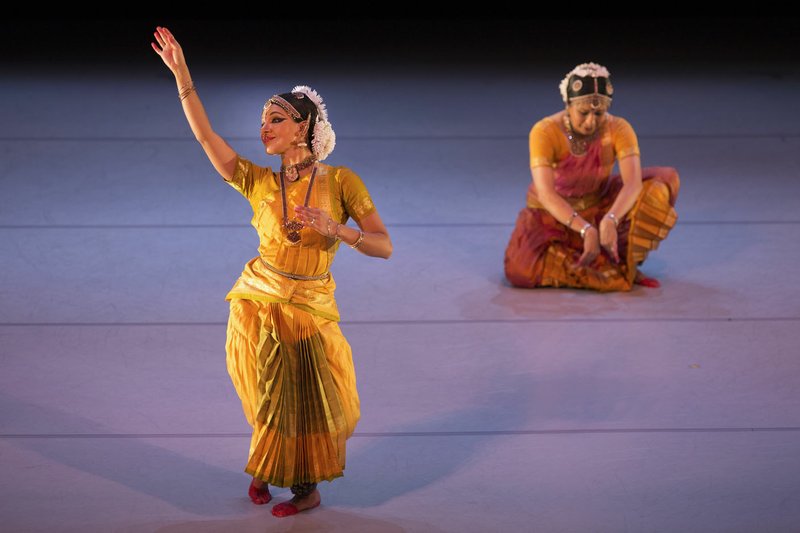The Ragalama Dance Company, says co-artistic director Aparna Ramaswamy, uses the ancient Indian form of dance called Bharatanatyam "as a language to explore universal themes." The company is bringing its production of "Written in Water," performed with live music, to the Walton Arts Center Stage on Oct. 14.
"We also do so in a collaborative practice with musicians and artists of other genres depending on the work we're creating," continues Ramaswamy. "When we're creating this work, we look back at our Indian roots -- and, often, poetry, literature, mythology or spirituality -- and create works that are layered and multi-dimensional."
FAQ
‘Written in Water’
WHEN — 7:30 p.m. Oct. 14
WHERE — Walton Arts Center in Fayetteville
COST — $10
INFO — 443-5600
The wildly creative and expressive production that evolves from the company was called "a soulful, imaginative and rhythmically contagious collaboration ... startlingly seamless and marvelously danceable" in The New York Times.
The 26-year-old company, based in Minneapolis, is a family affair: It was founded by Ramaswamy's mother, first-generation Indian-American artist Ranee Ramaswamy, who now serves as co-artistic director. The company also includes Ramaswamy's sister, Ashwini.
Ramaswamy says adhering to the 2,000-year-old Bharatanatyam tradition takes thorough understanding and research.
"Our works are very evolved and extensive in their scope," says Ramaswamy. "We work to find all the original lyrics. We work with different composers from different cities, different countries. We fund-raise to create the music. It doesn't happen in one year -- it's a multi-year endeavor. We're working on several pieces at one time at this moment and touring three other works."
"Written in Water" is based on the ancient Indian game Paramapadan, which, over the centuries, evolved into the popular children's game Americans know as "Chutes and Ladders."
"Indian families would stay up all night and fast and play this game in order to teach their children about negative and positive energies of humans," says Ramaswamy. "It's a very multidisciplinary approach to discussing spirituality and mythology and religion. The idea of this game was fascinating to us in terms of all of the potential for this content, the underpinnings of the history and the psychology of the idea of humans traveling towards something and experiencing different aspects of life as they did so.
The show also pulls inspiration from the 12th century Sufi text "The Conference of the Birds" and the Hindu story "Ksheerabthi Madanam."
"As the dancers -- or players -- move through the board ... the nuances of the motions that go along with each situation are explored. The last piece is that we explore an Indian myth about the churning of the ocean."
The performance clearly offers a heaping helping of history, literature and mythology, but Ramaswamy says potential audience members should not fear the challenge; she promises audiences will find the show accessible.
"I do think dance is intimidating for a lot of audiences," she acknowledges. "I think people feel like they can intellectually grasp the narrative of theater or the accessibility of music. I think with dance, people feel they need to understand more of the technicality of dance, so I think [that perception] is a challenge.
"The thing is, dance can be enjoyed in the same ways as the other art forms. It can be incredibly emotionally evocative. You're seeing wonderful physical expressions ... these emotions of longing or love or sadness, and all of these shades and hues are related to the words and music. Together, it forms this really beautiful, genuine communication with the audience."
NAN What's Up on 10/07/2018

